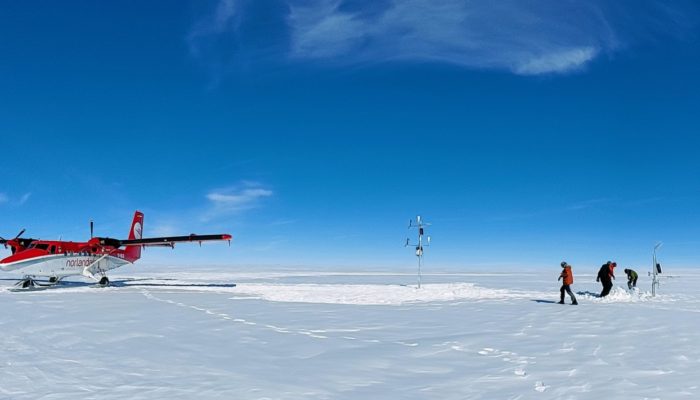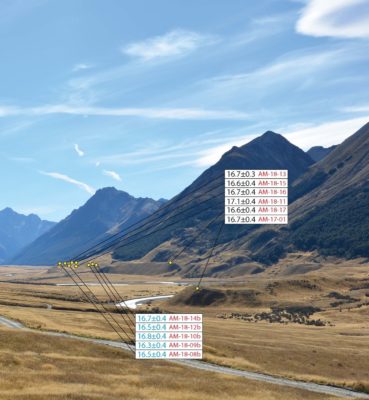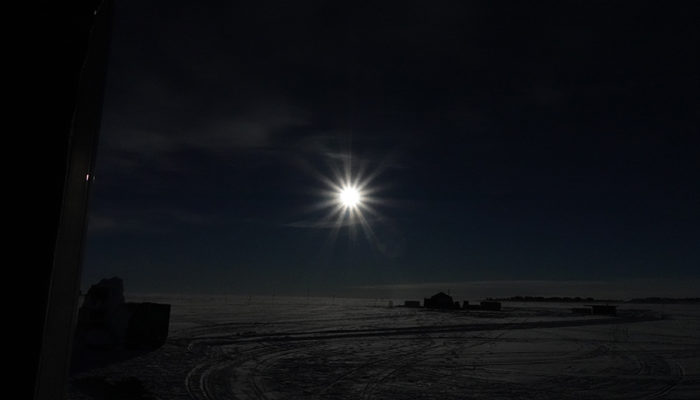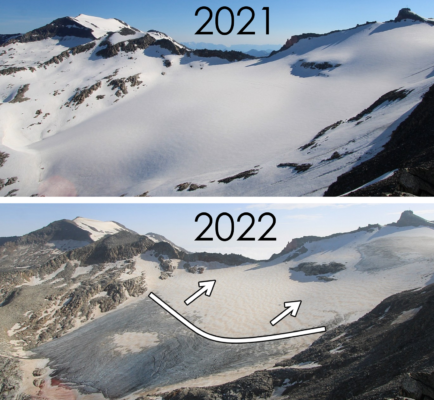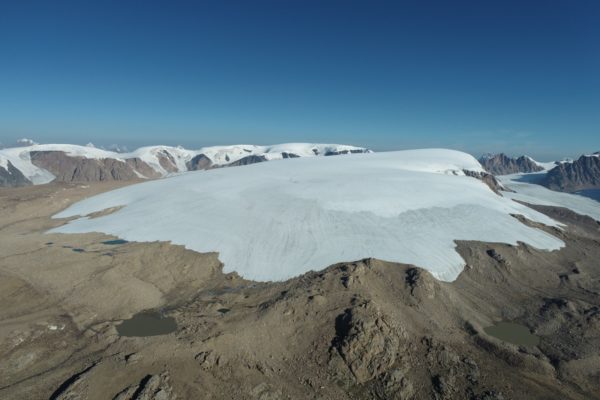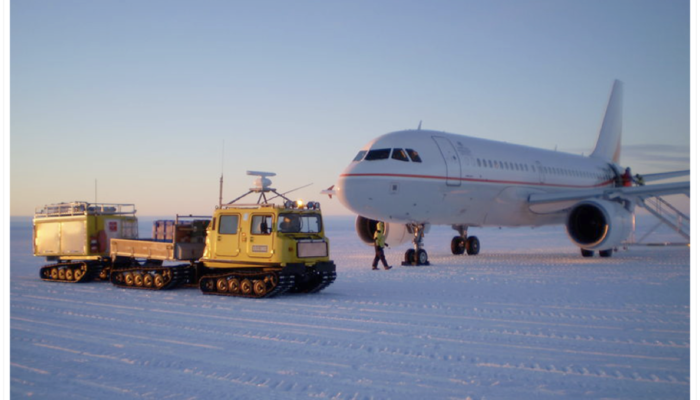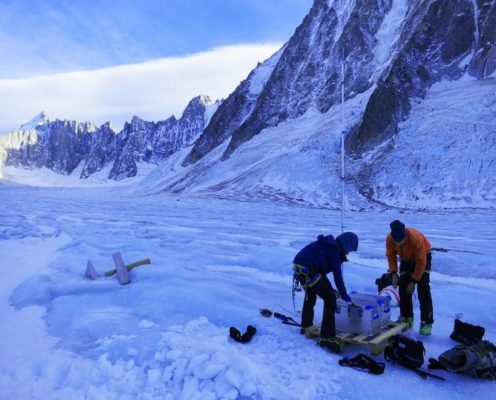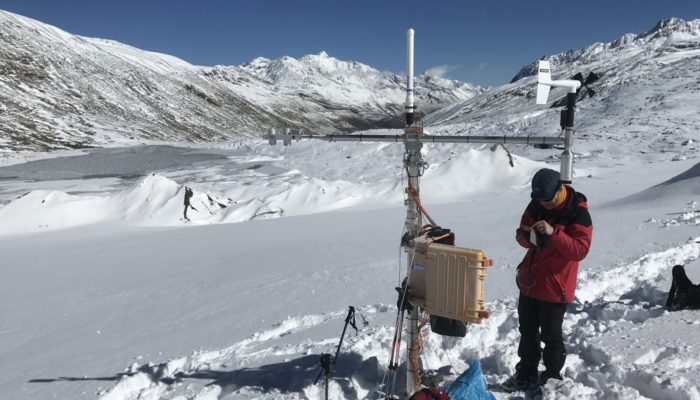Soaking up the sun and recharging batteries on a peaceful and quiet summer day, or fighting to stay upright during extreme snow storms in the middle of winter, while continuously recording valuable air temperature, pressure, wind-speed and so much more – such is the life of an automatic weather station on the Greenland ice sheet. Even though they are so remote, sitting by themselves surround ...[Read More]
Cryo Adventures – Installing a weather station on the Greenland Ice Sheet
